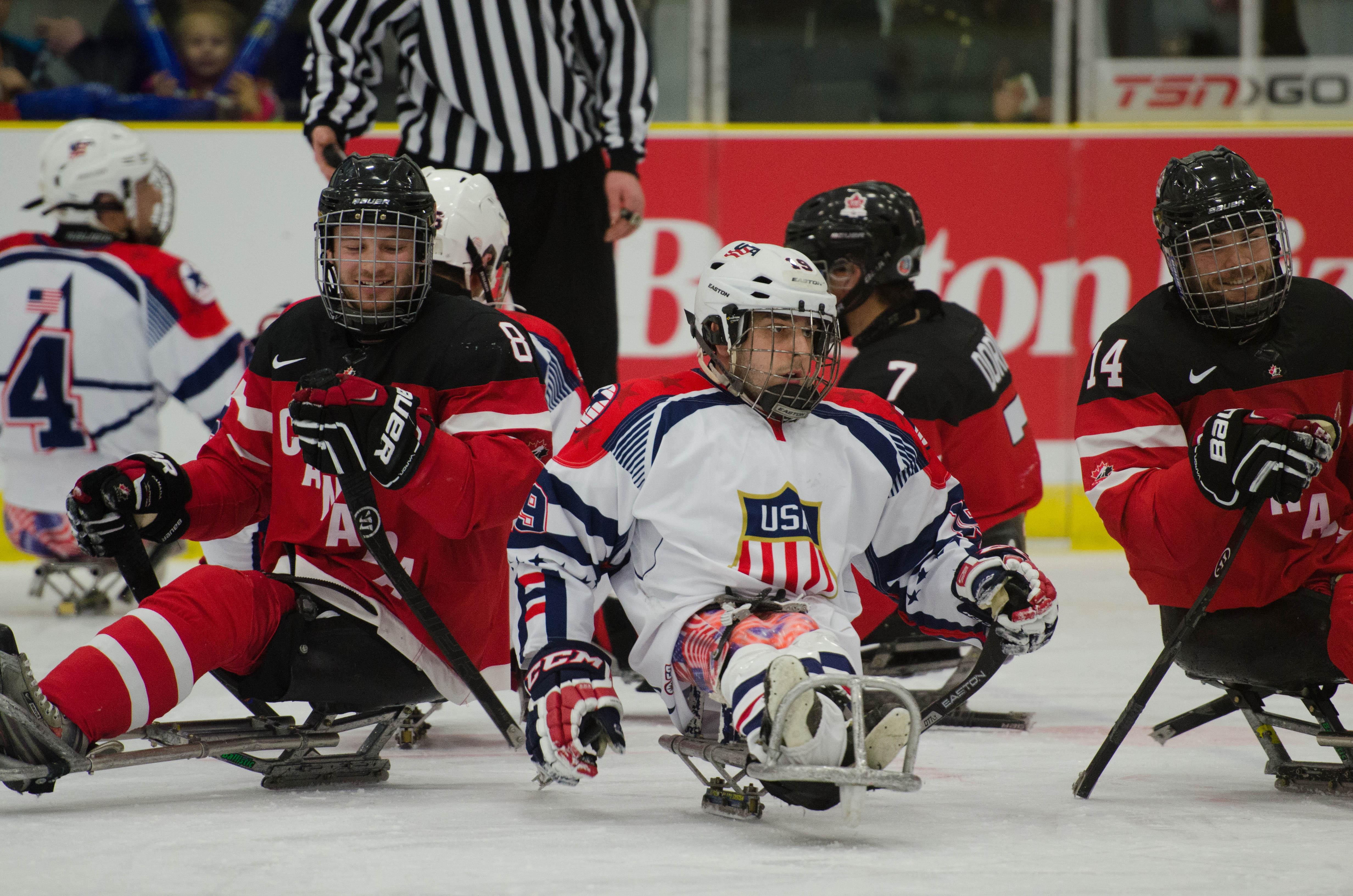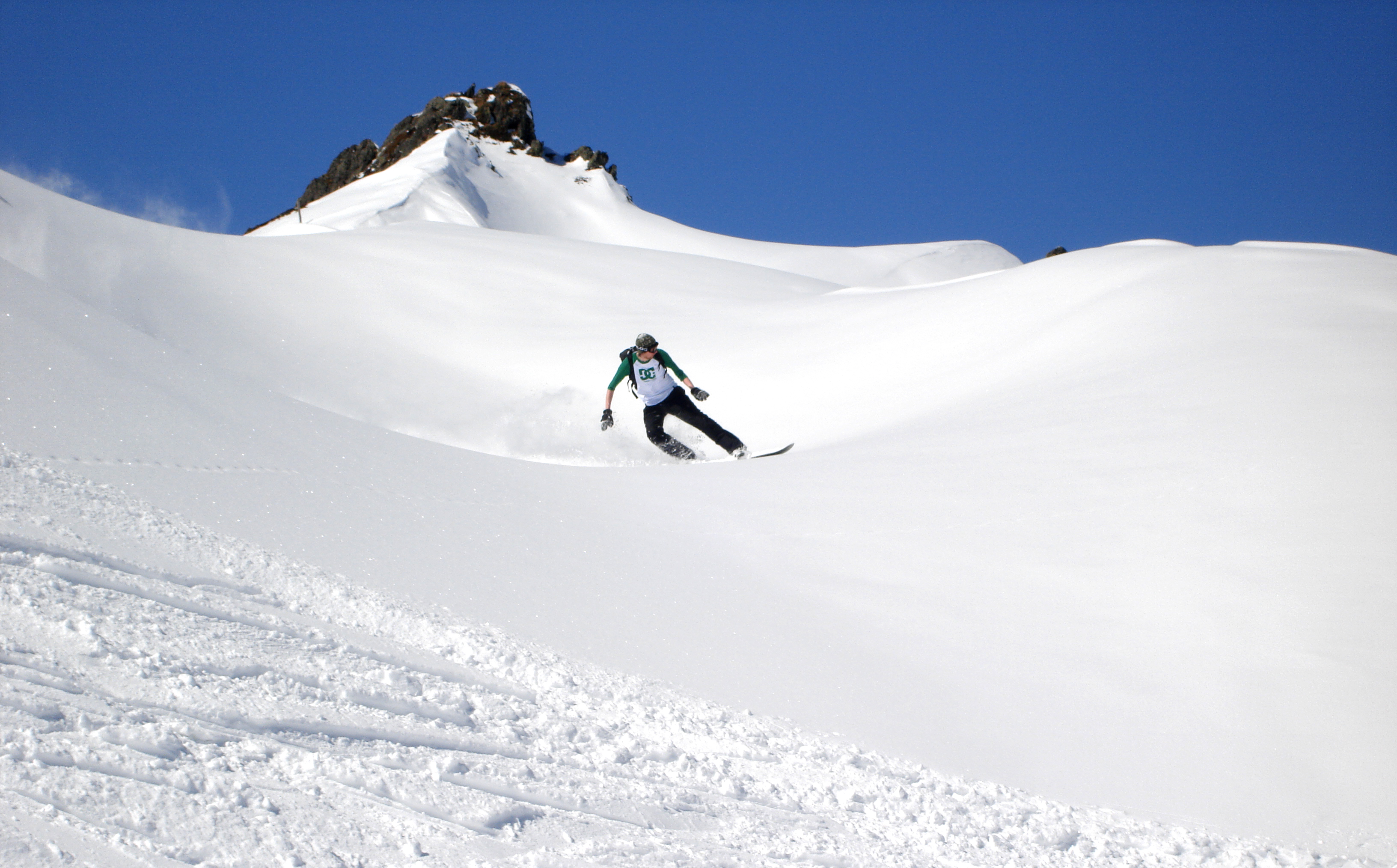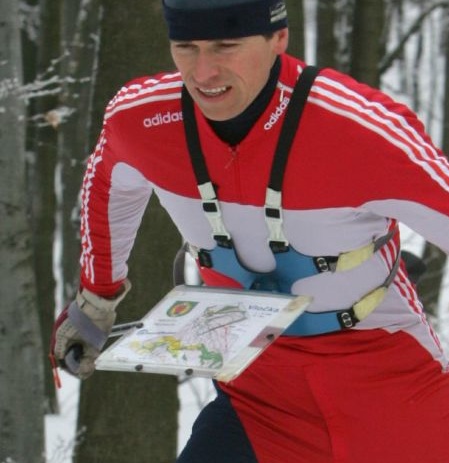|
Winter Sports
Winter sports or winter activities are competitive sports or non-competitive recreational activities which are played on snow or ice. Most are variations of skiing, ice skating and sledding. Traditionally, such games were only played in cold areas during winter, but artificial snow and artificial ice allow more flexibility. Playing areas and fields consist of either snow or ice. Artificial ice can be used to provide ice rinks for ice skating, ice hockey, para ice hockey, ringette, broomball, bandy, rink bandy, rinkball, and spongee in a milder climate. The sport of speed skating uses a frozen circular track of ice, but in some facilities the track is combined in an enclosed area used for sports requiring an ice rink or the rink itself is used. Alternatively, ice cross downhill uses a track with various levels of elevation and a combination of bends. Long distance skating ( "marathon skating") such as tour skating is only performed outdoors and uses the available na ... [...More Info...] [...Related Items...] OR: [Wikipedia] [Google] [Baidu] |
Para Ice Hockey
Sledge hockey, also known as Sled hockey in American English, and Para ice hockey in international competition, is an adaptation of ice hockey for players who have a physical disability. The sport was invented in the early 1960s at a rehabilitation centre in Stockholm, Sweden, and played under similar rules to standard ice hockey. Players are seated on sleds and use special hockey sticks with metal "teeth" on the tips of their handles to navigate the ice. Playing venues use an ice hockey rink. While sledge hockey is a part of the Winter Paralympics programme, it only includes a category for men which doubles as a mixed-sex division, allowing only a limited number of female athletes to participate. A division devoted exclusively for women does not exist. Via its division World Para Ice Hockey, the International Paralympic Committee (IPC) acts as the international sanctioning body for the sport. It has been played in the Winter Paralympics since 1994, and has been one of the m ... [...More Info...] [...Related Items...] OR: [Wikipedia] [Google] [Baidu] |
Snowboarding
Snowboarding is a recreational and competitive activity that involves descending a snow-covered surface while standing on a snowboard that is almost always attached to a rider's feet. It features in the Winter Olympic Games and Winter Paralympic Games. Snowboarding was developed in the United States, inspired by skateboarding, sledding, surfing, and skiing. It became popular around the globe, and was introduced as a Winter Olympic Sport at Nagano in 1998 and featured in the Winter Paralympics at Sochi in 2014. , its popularity (as measured by equipment sales) in the United States peaked in 2007 and has been in a decline since. History The first snowboards were developed in 1965 when Sherman Poppen, an engineer in Muskegon, Michigan, invented a toy for his daughters by fastening two skis together and attaching a rope to one end so he would have some control as they stood on the board and glided downhill. Dubbed the " snurfer" (combining snow and surfer) by his wife Nanc ... [...More Info...] [...Related Items...] OR: [Wikipedia] [Google] [Baidu] |
Bobsleigh
Bobsleigh or bobsled is a team winter sport that involves making timed runs down narrow, twisting, banked, iced tracks in a gravity-powered sleigh. International bobsleigh competitions are governed by the International Bobsleigh and Skeleton Federation, also known as FIBT from the French . National competitions are often governed by bodies such as the United States Bobsled and Skeleton Federation, Bobsleigh Canada Skeleton, and the German Bobsleigh, Luge, and Skeleton Federation. The first bobsleds were built in the late 19th century in St. Moritz, Switzerland, by wealthy tourists from Victorian Britain who were staying at the Palace Hotel owned by Caspar Badrutt. The early sleds were adapted from boys' delivery sleds and toboggans. These eventually evolved into bobsleighs, luges and skeletons. Initially the tourists would race their hand-built contraptions down the narrow streets of St. Moritz; however, as collisions increased, growing opposition from St. Moritz resident ... [...More Info...] [...Related Items...] OR: [Wikipedia] [Google] [Baidu] |
Rink Bandy
Rink bandy is a variant of the larger sport of bandy. Unlike bandy which is played on a large bandy field, rink bandy is played on significantly smaller ice hockey sized ice rinks. While a bandy field is about the same size as a football pitch, rink bandy is played on ice hockey rinks. Rink bandy originated in Sweden in the 1960s and was originally called ''hockeybockey''. With the arrival of indoor ice hockey arenas, it was a way for bandy players to practice on ice for a longer time of the year by making use of the new indoor facilities. Due to the fact that bandy fields are much larger than ice hockey rinks, playing surfaces for bandy were still only made outdoors in the wintertime when artificial freezing was unnecessary. The game of rink bandy uses a bandy ball and bandy sticks. The goalkeeper has no stick. A rink bandy game lasts 60 minutes but is composed of either two 30 minute halves or three 20 minute periods. Similar rules to bandy are used, but they are simp ... [...More Info...] [...Related Items...] OR: [Wikipedia] [Google] [Baidu] |
Ski Orienteering
Ski orienteering (SkiO) is a cross-country skiing endurance winter racing sport and one of the four orienteering disciplines recognized by the IOF. A successful ski orienteer combines high physical endurance, strength and excellent technical skiing skills with the ability to navigate and make the best route choices while skiing at a high speed. Standard orienteering maps are commonly used, but since 2019, a separate mapping standard ISSkiOM has been produced which recommends a subset of the symbols used in other disciplines. Ski-orienteering maps uses green symbols to indicate trails and tracks and different symbols to indicate their navigability in snow; other symbols indicate whether any roads are snow-covered or clear. Navigation tactics is similar to mountain bike orienteering. Standard skate-skiing equipment is used, along with a map holder attached to the chest. Compared to cross-country skiing, upper body strength is more important because of double-poling needed along na ... [...More Info...] [...Related Items...] OR: [Wikipedia] [Google] [Baidu] |
Skeleton (sport)
Skeleton is a winter sliding sport in which a person rides a small sled, known as a skeleton bobsled (or -sleigh), down a frozen track while lying face down and head-first. The sport and the sled may have been named from the bony appearance of the sled. Unlike other sliding sports of bobsleigh and luge, the race always involves single riders. Like bobsleigh, but unlike luge, the race begins with a running start from the opening gate at the top of the course. The skeleton sled is thinner and heavier than the luge sled, and skeleton gives the rider more precise control of the sled. Skeleton is the slowest of the three sliding sports, as skeleton's face-down, head-first riding position is less aerodynamic than luge's face-up, feet-first ride. Previously, skeleton appeared in the Olympic program in St. Moritz, Switzerland, in 1928 and again in 1948. It was added permanently to the Olympic program for the 2002 Winter Olympics, at which stage a women's race was added. Duri ... [...More Info...] [...Related Items...] OR: [Wikipedia] [Google] [Baidu] |
Luge
A luge is a small one- or two-person sled on which one sleds Supine position, supine (face up) and feet-first. A luger steers by using the Calf (leg), calf muscles to flex the sled's runners or by exerting opposite shoulder pressure to the seat. Racing sleds weigh for singles and for doubles. Luge is also the name of an Olympic sport. Lugers can reach speeds of 140 km/h (87 mph). Austrians, Austrian Manuel Pfister reached a top speed of 154 km/h (96 mph) on a The Whistler Sliding Centre, track in Whistler, Canada, prior to the 2010 Winter Olympics. Lugers compete against a timer in one of the most precisely timed sports in the world—to one thousandth of a second on artificial tracks. The first recorded use of the term "luge" dates to 1905 and derives from the Savoy/Switzerland, Swiss dialect of the French language, French word ''luge'', meaning "small coasting sled". History The very practical use of sleds is ancient and widespread. The first recor ... [...More Info...] [...Related Items...] OR: [Wikipedia] [Google] [Baidu] |
Ski Jumping
Ski jumping is a winter sport in which competitors aim to achieve the farthest jump after sliding down on their skis from a specially designed curved ramp. Along with jump length, competitor's aerial style and other factors also affect the final score. Ski jumping was first contested in Norway in the late 19th century, and later spread through Europe and North America in the early 20th century. Along with cross-country skiing, it constitutes the traditional group of Nordic skiing disciplines. The ski jumping venue, commonly referred to as a ''hill'', consists of the jumping ramp (''in-run''), take-off table, and a landing hill. Each jump is evaluated according to the distance traveled and the style performed. The distance score is related to the construction point (also known as the ''K-point''), which is a line drawn in the landing area and serves as a "target" for the competitors to reach. The score of each judge evaluating the style can reach a maximum of 20 points. Th ... [...More Info...] [...Related Items...] OR: [Wikipedia] [Google] [Baidu] |
Alpine Skiing
Alpine skiing, or downhill skiing, is the pastime of sliding down snow-covered slopes on skis with fixed-heel bindings, unlike other types of skiing ( cross-country, Telemark, or ski jumping), which use skis with free-heel bindings. Whether for recreation or for sport, it is typically practiced at ski resorts, which provide such services as ski lifts, artificial snow making, snow grooming, restaurants, and ski patrol. " Off-piste" skiers—those skiing outside ski area boundaries—may employ snowmobiles, helicopters or snowcats to deliver them to the top of a slope. Back-country skiers may use specialized equipment with a free-heel mode, including 'sticky' skins on the bottoms of the skis to stop them sliding backwards during an ascent, then locking the heel and removing the skins for their descent. Alpine skiing has been an event at the Winter Olympic Games since 1936. A competition corresponding to modern slalom was introduced in Oslo in 1886. Participants an ... [...More Info...] [...Related Items...] OR: [Wikipedia] [Google] [Baidu] |
Cross-country Skiing (sport)
Competitive cross-country skiing encompasses a variety of race formats and course lengths. Rules of cross-country skiing are sanctioned by the International Ski Federation and by various national organizations. International competitions include the FIS Nordic World Ski Championships, the FIS Cross-Country World Cup, and at the Cross-country skiing at the Winter Olympics, Winter Olympic Games. Such races occur over homologated, groomed courses designed to support Cross-country skiing#Classic, classic (in-track) and freestyle events, where the skiers may employ Cross-country skiing#Skate skiing, skate skiing. It also encompasses cross-country ski marathon events, sanctioned by the Worldloppet Ski Federation, and cross-country ski orienteering events, sanctioned by the International Orienteering Federation. Related forms of competition are biathlon, where competitors race on cross-country skis and stop to shoot at targets with rifles, and paralympic cross-country skiing that ... [...More Info...] [...Related Items...] OR: [Wikipedia] [Google] [Baidu] |
Ice Skates
Ice skates are metal blades attached underfoot and used to propel the bearer across a sheet of ice while ice skating. The first ice skates were made from leg bones of horse, ox or deer, and were attached to feet with leather straps. These skates required a pole with a sharp metal spike that was used for pushing the skater forward, unlike modern bladed skates. Modern skates come in many different varieties, which are chosen depending on the nature of the requirements needed for the skating activity. They are worn recreationally in ice rinks or on frozen bodies of water across the globe and are used as footwear in many sports, including figure skating, bandy, ice hockey, ringette, rink bandy, rinkball, speed skating and tour skating. History According to a study done by Federico Formenti, University of Oxford, and Alberto Minetti, University of Milan, Finns were the first to develop ice skates some 5,000 years ago from animal bones. This was important for the Finnish pop ... [...More Info...] [...Related Items...] OR: [Wikipedia] [Google] [Baidu] |
Tour Skating
Tour skating is recreational long distance ice skating on natural ice. It is particularly popular in the Netherlands and the Nordic countries. It is becoming more popular in areas of North America such as New England, Southcentral Alaska, and Nova Scotia. While Nordic skating usually involves tours over open ice on marshes, lakes, rivers, or sea, in the Netherlands skaters follow marked routes on frozen canals and connected lakes. Consequently, there are differences in equipment and skating styles between these two regions. Alaskans often include winter camping on longer journeys of a hundred miles or more. Nordic skating is a popular activity in Sweden but is also becoming more popular in Finland and Norway, where it is called , and . In Canada and the United States this style is often called ''Nordic skating''. Other names used are ''trip skating'' and ''wild skating''. Dutch skating is called and is regarded by some as a sport in its own right. Nordic skating Nordic s ... [...More Info...] [...Related Items...] OR: [Wikipedia] [Google] [Baidu] |




.jpg)

.jpg)


